The source of the Nile in Uganda is one of the most iconic landmarks of Africa. It is also one of the best places to visit during your Uganda safaris and tours.
The source of the Nile River is located in Jinja approximately a two-hour drive from the capital city of Uganda, Kampala.We offer short Uganda safari trips and weekend tours to the Source of the Nile River/Jinja for excursions from this city.
Visitors with time for a day trip at the end or beginning of their long Uganda safaris can also visit the source of this iconic river. There are several other things to do in Jinja including;
- White-water rafting
- Boat cruises
- Kayaking
- Tubing
- Bungee jumping to kiss the Nile
- Quad-biking
- Horse riding along the banks of the Nile

A Short 2 Day Trip to Jinja, Uganda
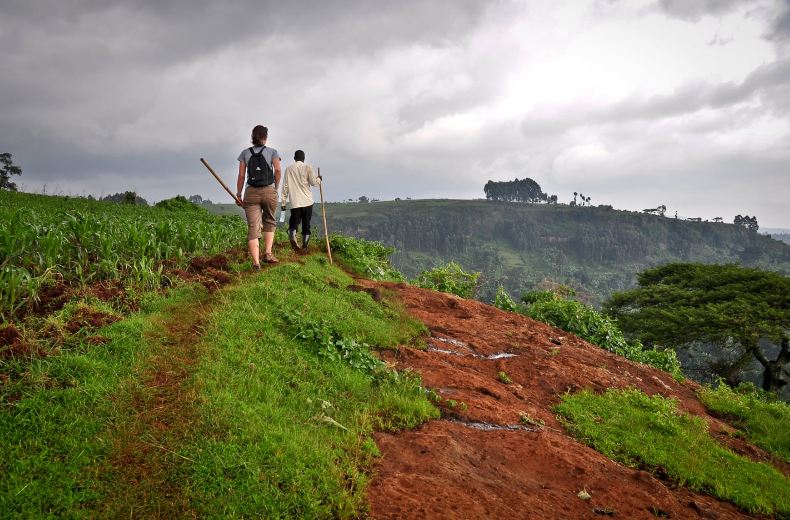
4 Day Jinja & Sipi Falls Trip
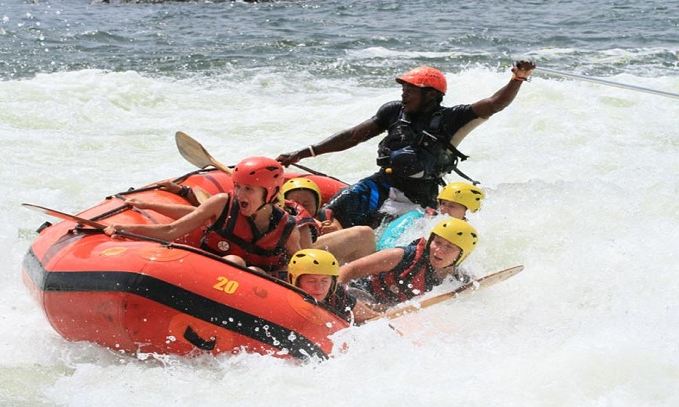
3 Days Ultimate Outdoor Adventure Tour to Eastern Uganda
What Is The Source Of The Nile River?
The source of the Nile is the place where the longest river on the planet exits Africa’s largest lake to commence an epic 6700-km journey north to the Mediterranean Sea in Egypt. River Nile is one of the Wonders of Africa, along with Victoria Falls, Mount Kilimanjaro, Ngorongoro Crater and Serengeti Mammal Migration in Tanzania, Sahara Desert, and Okavango Delta.
This mighty river leaves Lake Victoria in Jinja as White Nile (Victoria Nile). It flows north for some 130 km to Lake Kyoga. The last Uganda part of the around 200-kilometer river section begins from the western shores of Kyoga and flows to the east and north to Karuma Falls.
For the remaining part, it flows westerly through the world’s strongest waterfalls, Murchison Falls until it reaches the northern shores of Lake Albert where it forms a wildlife-rich river delta.
After leaving Albert, the Nile continues north through Uganda as the Albert Nile and then flows into South Sudan, Sudan, and finally to the Mediterranean Sea.
Who Discovered The Source Of The Nile River?
The source of the Nile in Jinja was discovered by John Hanning Speke.
Speke was the British explorer and officer in the British Indian Army who first reached Lake Victoria in 1858, returning to establish it as the source of the River Nile by 1862.
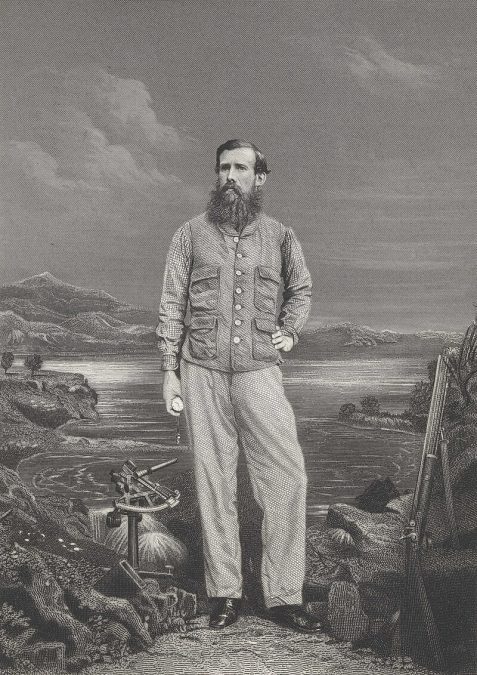
History About the Source of River Nile
Since the time of Julius Caesar, finding the source of the Nile was one of the most important scientific questions. Although it is not easy to envision such a puzzle in the era of Google Maps, the search for the Nile River’s source was nearly as fascinating as the race to put a man on the moon, as it was wrapped up in heroics and intrigue.
The Nile has played a significant role in some of the most ancient civilizations to inhabit the Earth.
Without its huge water quantities, the ancient Egyptians would likely never have accumulated the wealth and power needed to build pyramids and control vast territories beginning 5,000 years ago.
These ancient Egyptians were possibly familiar with the Nile River as far as Sudan and with the Blue Nile as far as its source in Ethiopia. However, they showed little or no interest in exploring the source of the White Nile. The main source of the Nile was unknown to them.
The legendary Greek astronomer and geographer, Ptolemy who lived in Alexandria, wrote in 150 CE that the White Nile originated in the high snow-covered Mountains of the Moon (since identified with the Ruwenzori Mountains).
Europeans began to learn about the origins of the Nile River in the 14th century. This is when the Pope sent monks as emissaries to Mongolia who passed India, the Middle East, and Africa. These monks described being told of the source of the Nile in Abyssinia (Ethiopia).
Search for the Nile source 1856ÔÇô1859
In 1856, John Speke and Richard Burton with the support of the Royal Geographical Society went to East Africa to find the Great Lakes, which were rumored to exist in the heart of the continent. 
It was anticipated that the expedition would locate the source of the Nile River.
The journey began from Zanzibar Island in June 1857. It was very strenuous and both men fell ill from several tropical diseases once they went inland.
By 7 November 1857, they had traveled over 600 miles on foot and reached Tabora. Here they rested and recuperated among Arab slave traders who had a settlement there.
In Tabora, Burton became seriously ill and Speke went briefly blind as they traveled further west. 
After a grueling journey, the two explorers arrived in Ujiji in February 1858 and became the first Europeans to reach Lake Tanganyika.
They decided to tour the lake. But it was vast. And they could get only small canoes from the locals. Burton was also too ill to journey. Thus, Speke crossed the lake with a canoe.
During this exploration, Speke suffered severely when he became temporarily deaf after a beetle crawled into his ear and he tried to remove it with a knife.
Unable to properly explore the lake, Speke returned. The pair had initially misunderstood that the River Nile flowed out of Lake Tanganyika from the north side.
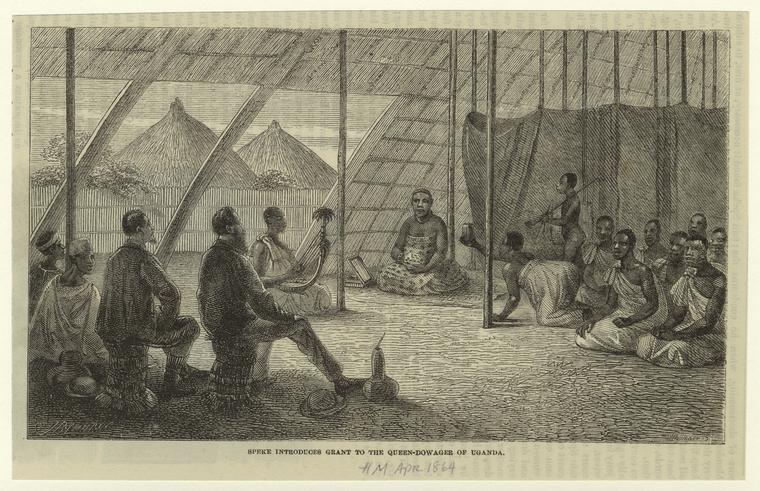
Speke’s travels to Lake Victoria
John Speke and Richard Burton had also heard of a second lake to the north-east.
In May 1858, they planned to discover it on the way back to the coast. But Burton was too weak to make the exploration and therefore stayed in Tabora.
Speke went on a side trip of 47 days that was 452 miles up and down. On 30 July 1858, Speke became the first European to see Lake Victoria.
This lake was known to locals as Nam Lolwe in the Dholuo language and Nnalubaale in the Luganda language. Speke renamed the lake after Queen Victoria of England and was the first persons to map it.
It was this Lake Victoria that finally proved to be the source of the River Nile.
The eyes of John Speke were still bothering him. And he only saw a small part of the southern end of the lake. This lake’s being considerably higher than Lake Tanganyika did make it a more likely candidate for the Nile River source.
From the beginning, the relationship between Burton and Speke was one of opposites. Burton considered Speke a less experienced traveler in remote regions. 
But Burton himself appears to have been jealous. Once it became clear that Speke might have found the true source of the Nile River the relationship deteriorated further.
Return to England & debate over the source of the Nile
The return journey from Tabora began on 26 September 1858. Once Speke and Burton were back on the coast they went by ship to Zanzibar Island and then travelled to Aden.
When back at the coast Burton had written a letter to Norton Shaw of the Royal Geographical Society (which had partially sponsored the journey) in which Burton enclosed a Lake Victoria map made by John Speke and wrote “There are grave reasons for believing it (the lake) to be the source of the principal feeder of the White Nile.”
Now further disagreements developed. Burton maintained that they had promised each other in Aden not to make public announcements till they both were back in England.
Richard Burton also accused Speke of a breach of promise for publicly claiming that the source of the Nile River was found on their trip.
Burton now turned against the theory that Lake Victoria was the source of the Nile. And he now said the river flowing out of the north side of Lake Tanganyika was the source.
In that same letter to Shaw, Burton had also indicated that John Hanning Speke would present his findings to the Royal Geographical Society, as he was prevented from traveling because of poor health and would be in England a short time after Speke.
The jealousies and accusations between the two men got ever greater, further inflamed by people who stood to gain from the feud such as book publishers and newspapers.
Richard Burton was still extremely weak. And once he appeared in front of a committee of the Royal Geographical Society he was unable to make a convincing case for his leading a second expedition to settle the unresolved matters about the Nile.
The rift widened and possibly became irreparable when John Speke was chosen to lead a following expedition instead of Burton.
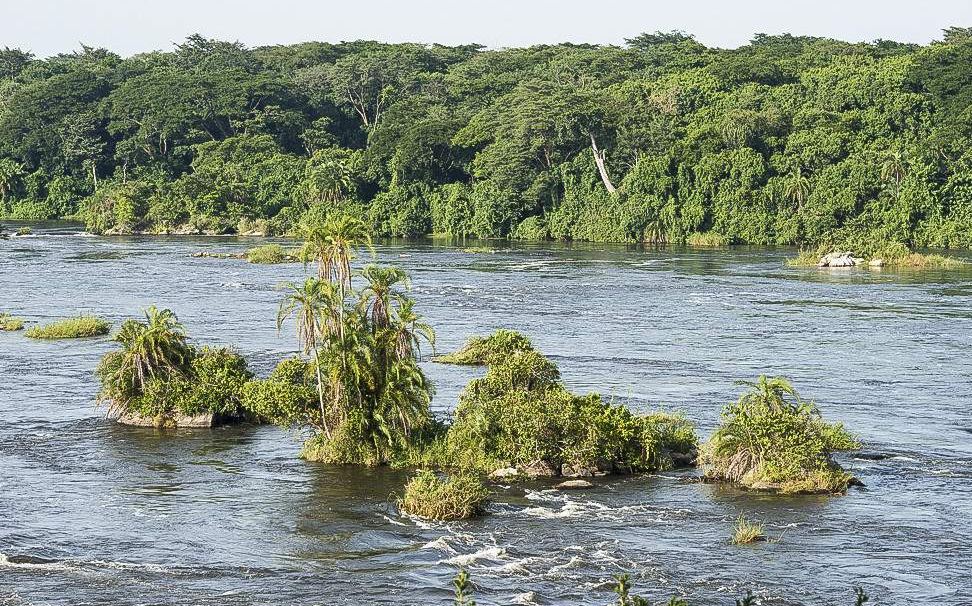
1 Day Jinja Tour, Ssezibwa Falls, Mabira Forest & Source Of The Nile

18 Days Uganda Safari, Gorillas, Chimps, Wildlife, & Cultural Experience
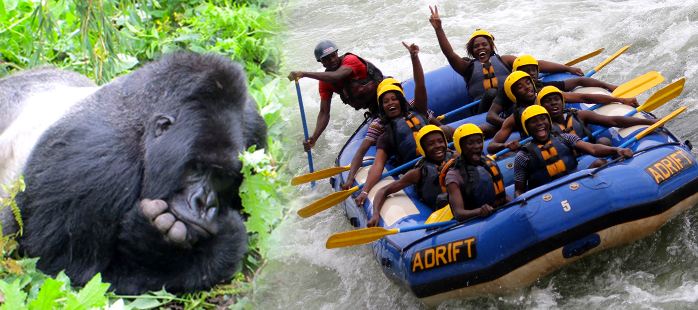
5 Days Gorilla Trekking & White Water Rafting Safari
Second Journey To The Source Of The Nile, 1860-1861
Together with James Grant, John Hanning Speke left Portsmouth on 27 April 1860 and departed from Zanzibar in October 1860.
The expedition approached the lake from the southwest but Grant was always sick and was unable to travel with Speke much of the time.
As during the first exploration, in this period of history, Arab slave traders had created an atmosphere of great distrust towards any foreigners entering central Africa.
Most tribes either fled or fought when encountering them as they assumed all outsiders to be potential slavers. Lacking a great deal of guns and soldiers, the only thing the expedition could do was make peace offerings to locals.
Both men were severely delayed and their supplies were depleted by demands for gifts and passage fees by smaller local chieftains.
After numerous months of delays, Speke reached Lake Victoria on 28 July 1862. He then moved to the west side around Lake Victoria but only saw it from time to time.
But on the north side of the lake, John Speke found the Nile flowing out of it and discovered the Ripon Falls. Speke then traveled down the Nile with Grant.
Because of travel restrictions placed by the local chieftains, tribal wars, and the difficulty of the terrain, Speke was not able to map the entire flow of the Nile from Lake Victoria north.
By January 1863 Speke and Grant reached Gondokoro in Sudan, where he met Samuel Baker and his. Speke, using Baker’s ship, then proceeded to Khartoum from which he sent a celebrated telegram to London: The Nile is settled. However, Speke’s expedition did not resolve the issue.
Burton claimed that because Speke had not followed the Nile from the place it flowed out of Lake Victoria to Gondokoro, he could not be sure they were the same river.
Meanwhile, Baker and Florence stayed in Gondokoro and tried to settle the flow of the river from there to Lake Victoria by traveling south.
They eventually, after tremendous hardships, such as being wracked by fevers and held up by rulers for months on end, found Lake Albert and the Murchison Falls.
Return To London & The Third Expedition
Speke and Grant went back to England, where they reached in June 1863 and were welcomed as genuine heroes.However, this did not last long in John Speke’s case.
Disputes with charismatic Richard Burton, who was relentless in his criticisms and a very compelling public speaker and gifted writer, left the discoveries of John Speke in less than an ideal light. Speke had also dedicated themselves to writing a good book for John Blackwood which he found hard and time-consuming as he was not naturally a gifted writer.
He failed to give a good and full report to the Royal Geographical Society for several months and thus in effect was not defending his position of discovery of the Source of the Nile.
All this led Roderick Murchison, the then president of the Royal Geographical Society, to start disliking John Speke, and a third expedition, led by Speke, was becoming less likely.
Now the Royal Geographical Society asked that a public debate should be held between Speke and Burton to try and settle the Nile.
Death
A debate was planned between John Speke and Richard Burton before the geographical section of the British Association in Bath on 16 September 1864.
But Speke had died the earlier afternoon from a possibly self-inflicted gunshot wound while shooting at Neston Park in Wiltshire.
An investigation concluded that the death was accidental, though the idea of suicide has appealed to some. Even Burton, could not set aside his own strong dislike of Speke.
He was vocal in spreading the idea of suicide, claiming that Speke feared the debate.
John Hanning Speke was buried in St Andrew’s Church, Dowlish Wake in Somerset, 5 miles away from the ancestral home of the Speke family.
Source of the Nile is settled, 18741877
In 18741877, Henry Stanley embarked on a new expedition.
He took a boat along the entire shore of Lake Victoria. He established that Lake Tanganyika and the Nile were not connected in any way.
He also explored the headwaters of Lake Edward. It was now proven that Speke had been right all along. And that the Nile flowed from Lake Victoria via Ripon Falls.
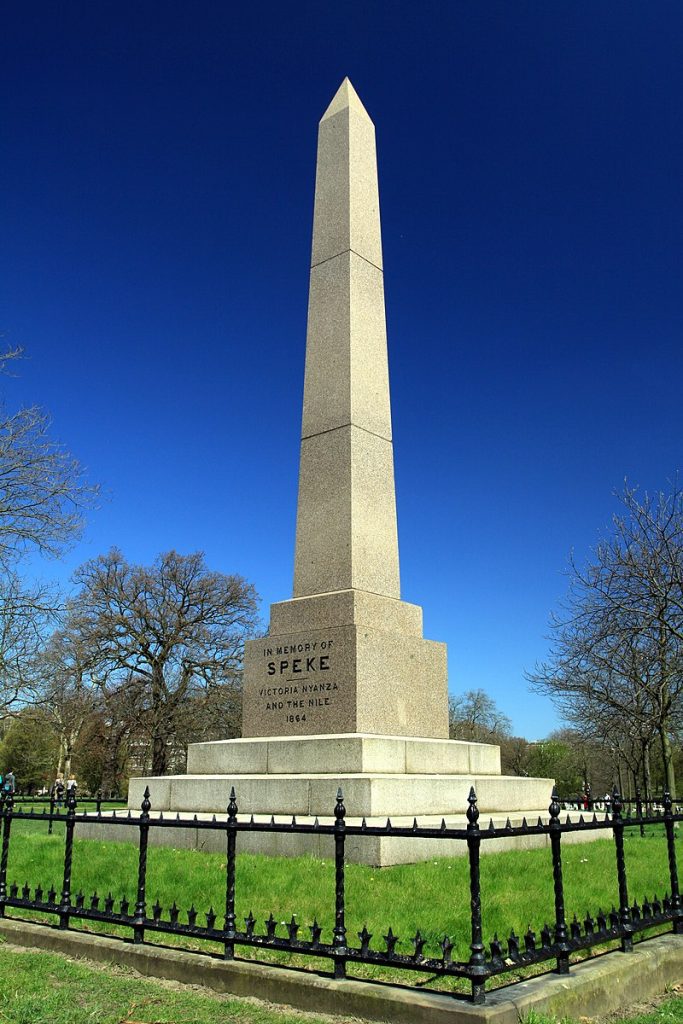
Ongoing Questions Around the Source of the Nile River
But even after centuries of exploration, the source of the Nile remains in dispute.
In 1937, German explorer Dr. Burkhart Waldecker claimed that the source could be traced further back to the headwaters of the River Kagera, the largest river that flows into Lake Victoria. Even as recently as 2006, explorers from New Zealand and the UK theorized that the true source is in Nyungwe Forest National Park of Rwanda.
Notwithstanding all the claims the Nile does indeed leave Lake Victoria in Jinja.
The Speke Monument, one of the tallest monuments in Uganda stands in the exact place where John Speke first beheld the Mighty Nile.
The authentic monument is situated on a scenic hill on the west bank of the Nile River with beautiful views of Lake Victoria and the Nile.
